As of now – like, right now, as this posts (which is 10:27 PM local, or 03:27 UTC tomorrow) – we have passed the December solstice, and the days are getting longer again, for those of us in the northern hemisphere. The daylight hours, anyway – we’ve been through all this before. But that gives me something else to post about, and knowing this was coming, I took pictures, even.
Not that there’s a lot out there to take pictures of, and it’s even worse than normal because it’s been pretty cold for this time of year and this latitude. But I saw this and pondered it briefly:
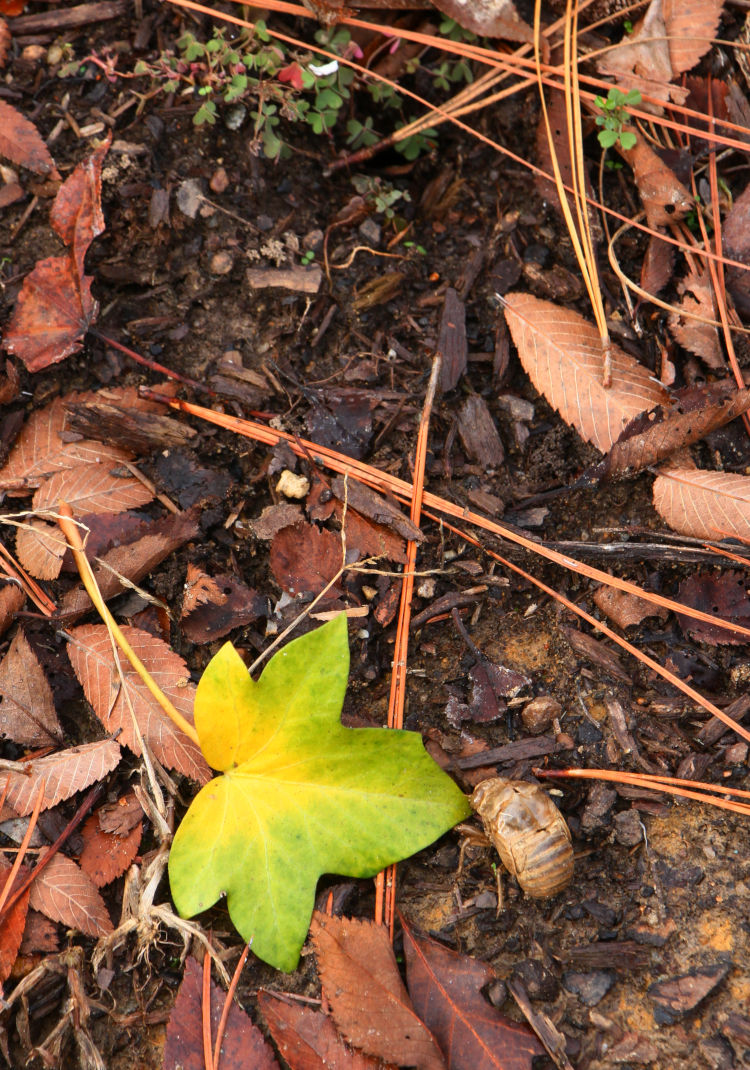
I’m not sure where a leaf that green came from at this time of year, especially since everything but the evergreens have shed their leaves long ago (they’re like half a meter deep in the backyard.) I’m in charge of the stuff that we maintain through the winter, mostly in the greenhouse, and it’s not from any of them. I’ll take the opportunity to mention that the avocado tree that we started from a pit has been enormously pleased with the greenhouse and has grown at least 20cm since it got in there two months ago, and two more have sprouted indoors and have grown a similar amount, and will be joining their companion out in the greenhouse soon. But you noticed the molted exoskeleton of the cicada in there too, of course – that’s just a leftover from the summer, since this is right at the base of the cherry tree.
And another for fart’s sake.
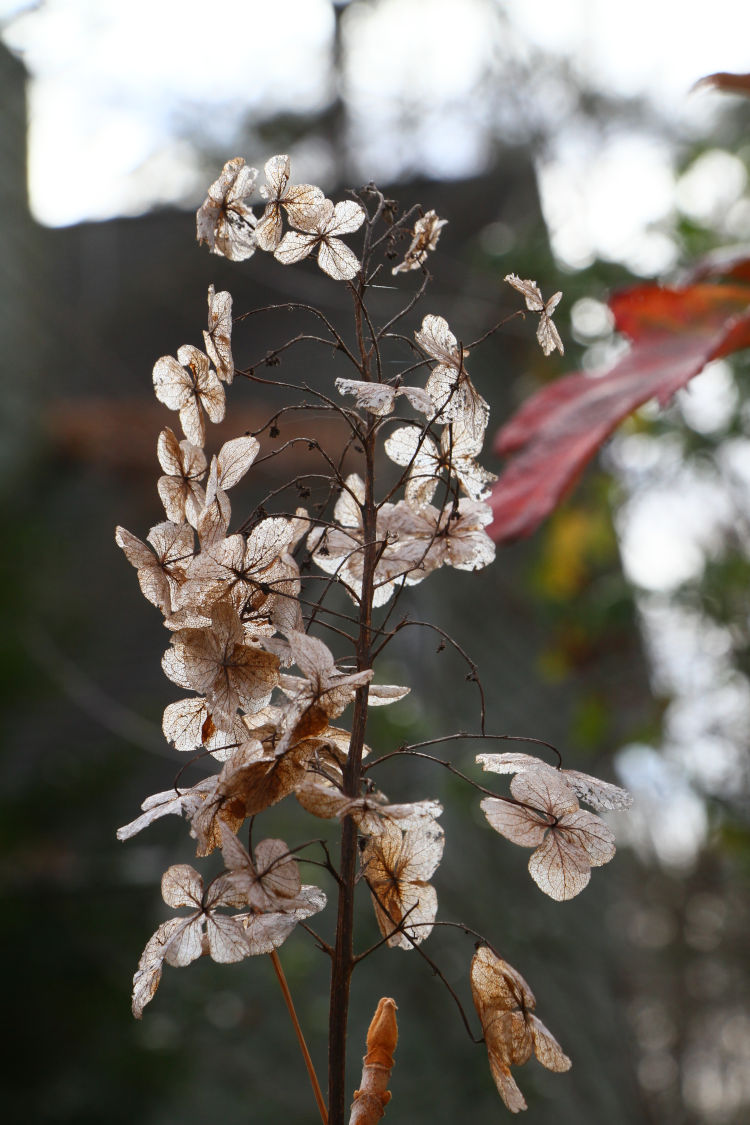
These are the flowers or the oak-leaf hydrangea (Hydrangea quercifolia,) and they’ve been like this for months – well, not quite this threadbare, but they hang on longer than any other flower around, and will mostly be here in the spring when the new batch starts.
But we have a little discovery from today too. While working outside, I glanced up at a passing aircraft and noticed something that I’ve only seen once before.
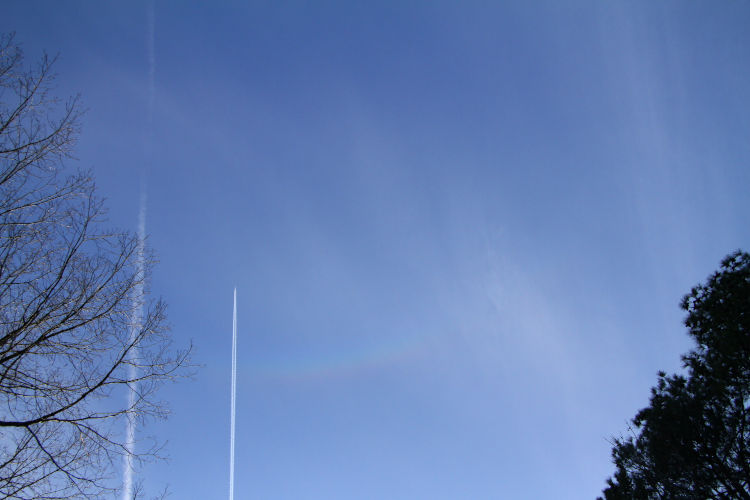
The sun is out of the bottom of the frame, so this is not the correct position for a rainbow or a sundog – this is instead a circumzenithal arc, formed by high-altitude ice crystals. This is the original image as captured, but I tweaked it a little, thusly:
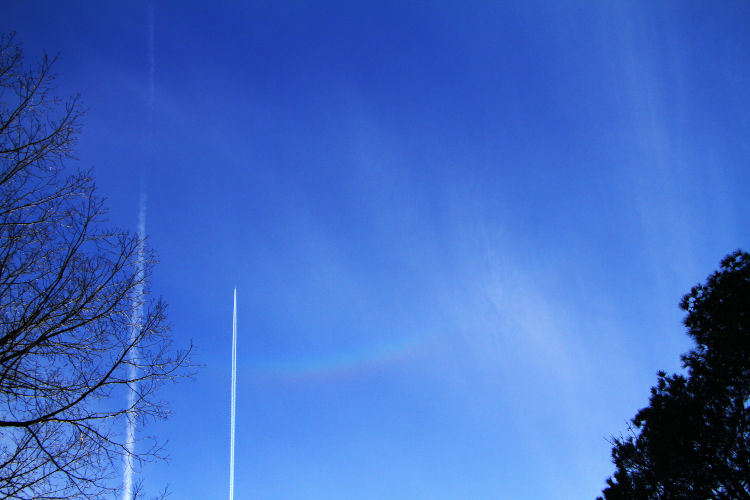
I had to run to get the camera, and so it had faded a little by the time I got the first images, and it shifted back and forth fairly quickly as I observed it. Thankfully, the one contrail cutting across dissipated quickly.
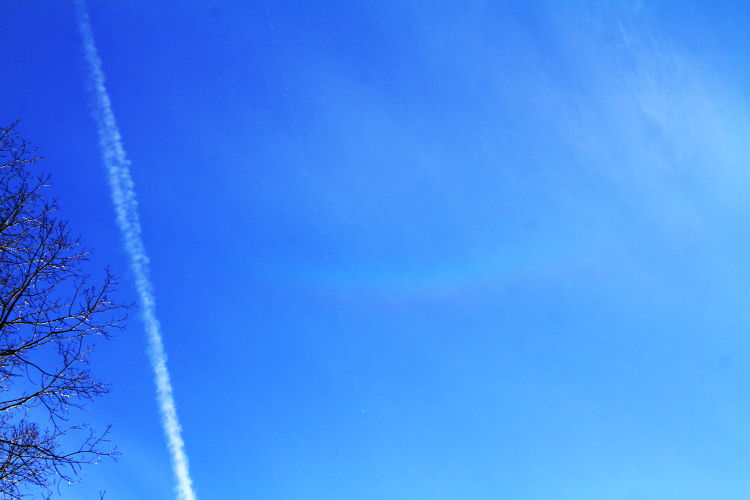
I never got a good display of it, though, and it faded as I stood there, then reappeared a little later on, but not as strongly. Still, something to keep an eye out for on sunny days, because these are the right conditions, and as the name implies, you’re going to see it just south of straight up.
I also did a couple quick frames of the moon while out there.
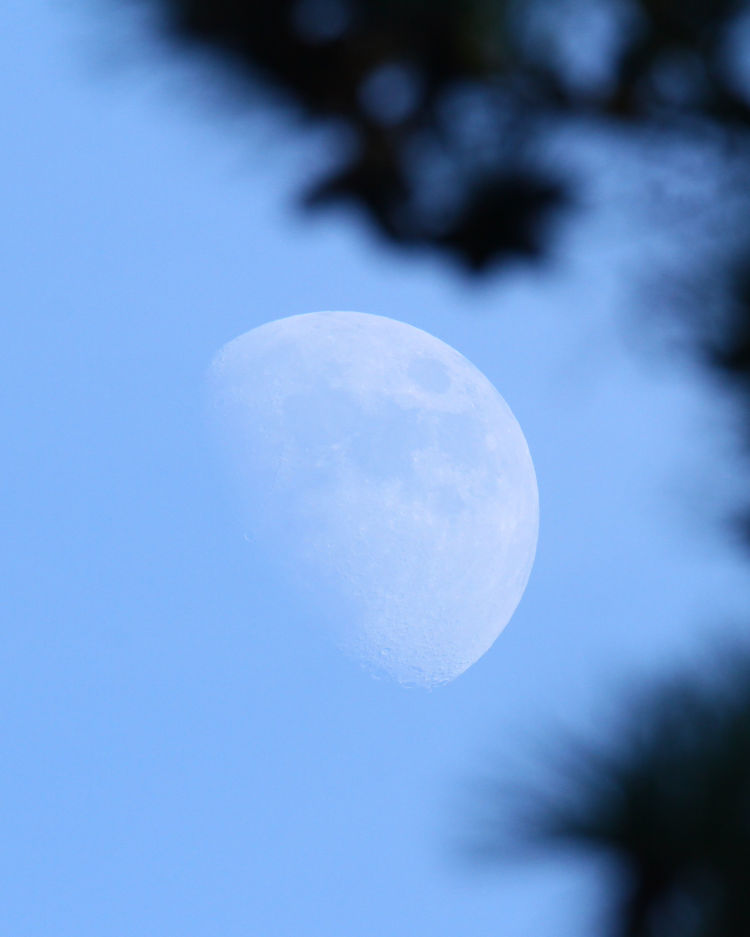
There was a point to this, and part of it was because I wasn’t sure that I’d have good conditions later on, so this was my safety image. But as we came closer to the exact time of the solstice, the sky was once again clear, and I was able to get the shots as planned.
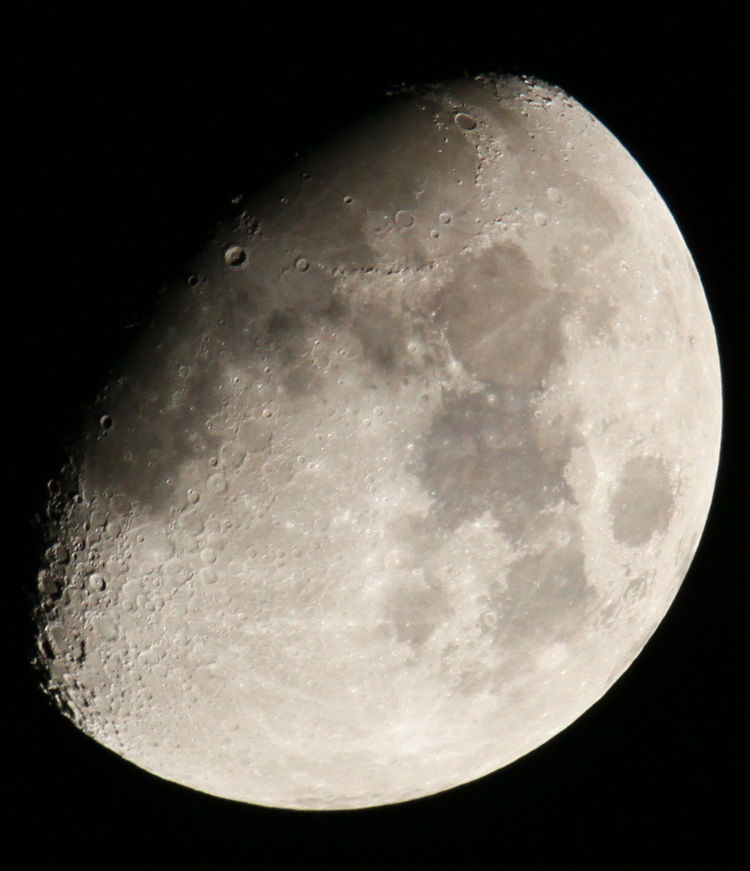
Now, this isn’t right at the solstice, because I had to write the post – it’s about 90 minutes early. But this is damn close to as low as it can get for as high as it is – make sense? Good – I don’t want to have to explain it again. Oh, all right: the solstices are when the Earth’s axis is angled the farthest from the sun, either the northern axis (right now) or the southern, which happens in June. This means the arc of the sun and moon drop the lowest towards the horizon on those days, even though a) we hadn’t quite hit the solstice yet for this image, and b) this was after the moon had passed the southernmost point of its path. It was very high in the sky, making photographing it awkward from having to be beneath the camera, but for the next six months, it will be higher when viewed at this same point in its orbit. Yeah, it’s all semantics and orbital mechanics and other mythologies, but it’s a topic to post about, so chill.
I’ll note that the conditions for the circumzenithal arc had possibly not passed, either, because at times the haze around the moon was plainly visible, though harder to capture in a photograph.
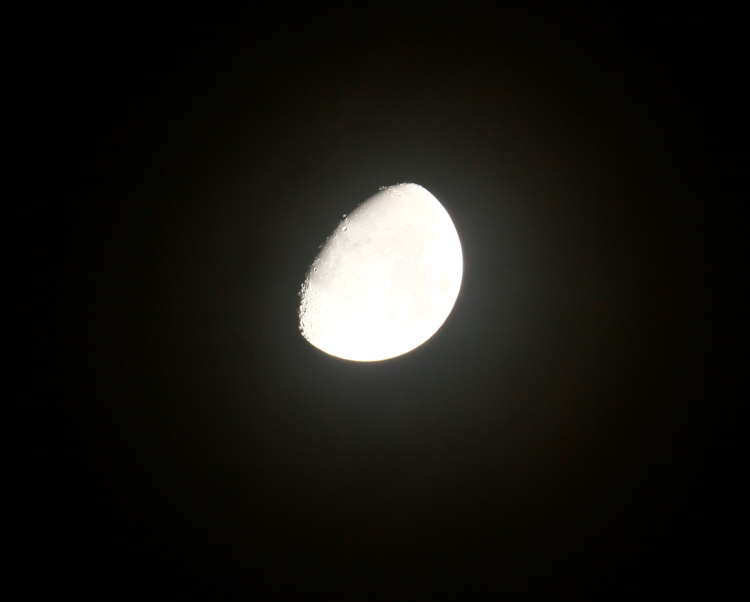
It’s not like you’re likely to see a circumzenithal arc at night, by the light of the moon, because look how faint it is during the day. But it’s possible, I suppose, especially if you use a long exposure. Though if I’d even tried looking for that, this post would be late, and that’s simply unacceptable – I have an obligation, that I created myself, that even if I had readers, no one would care about. Man, that’s pathetic, isn’t it?



















































